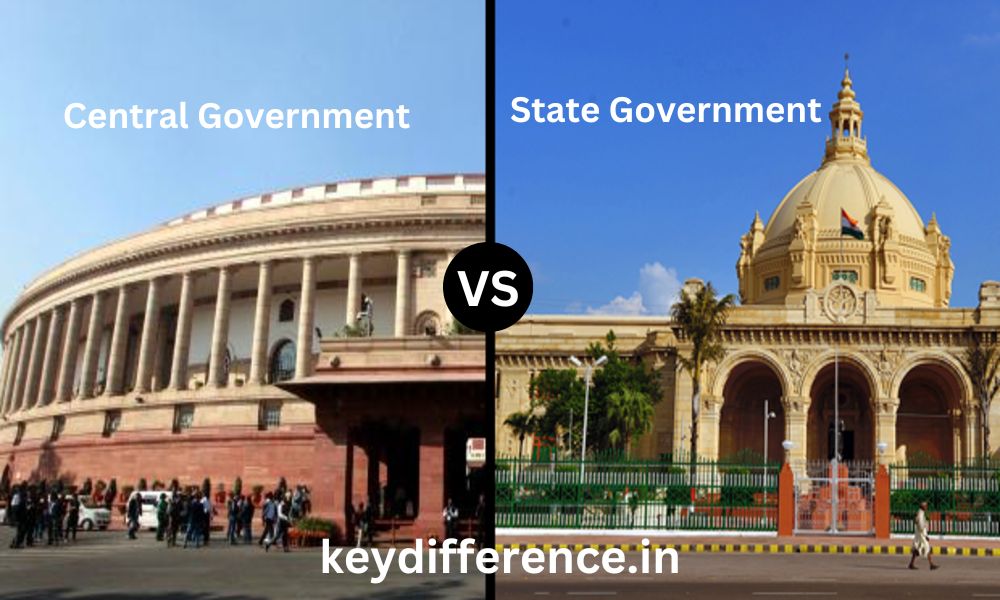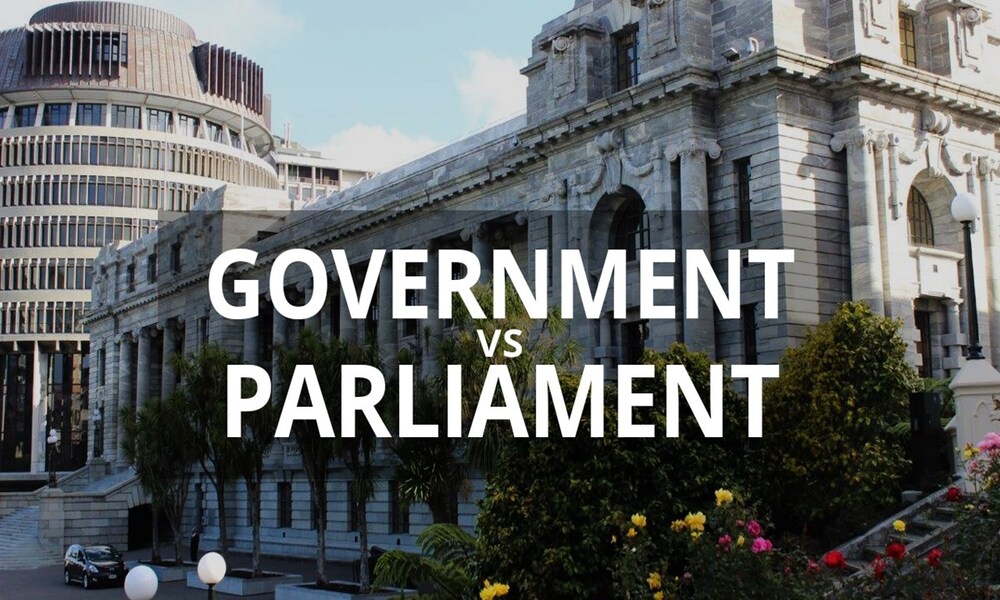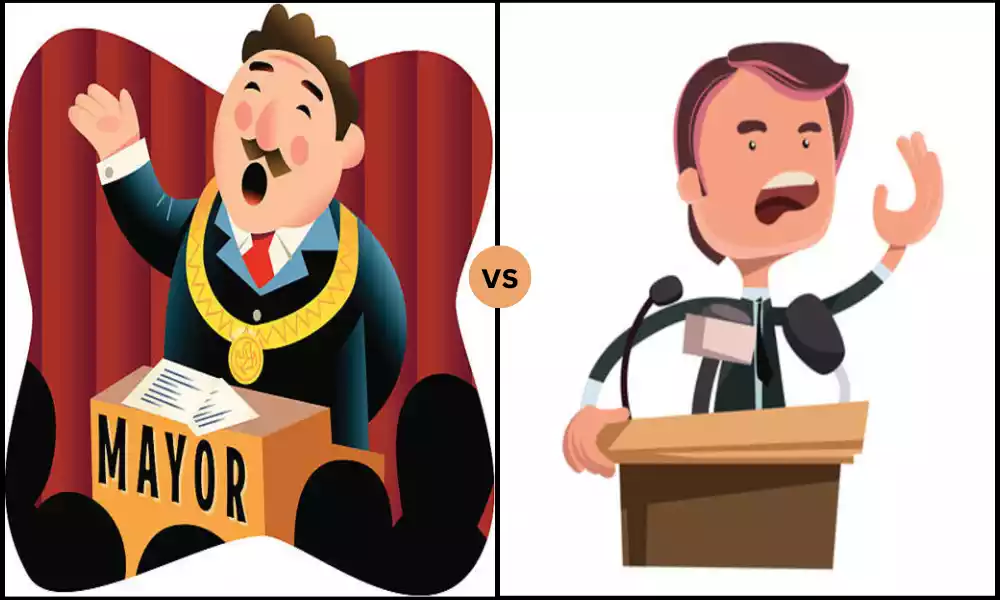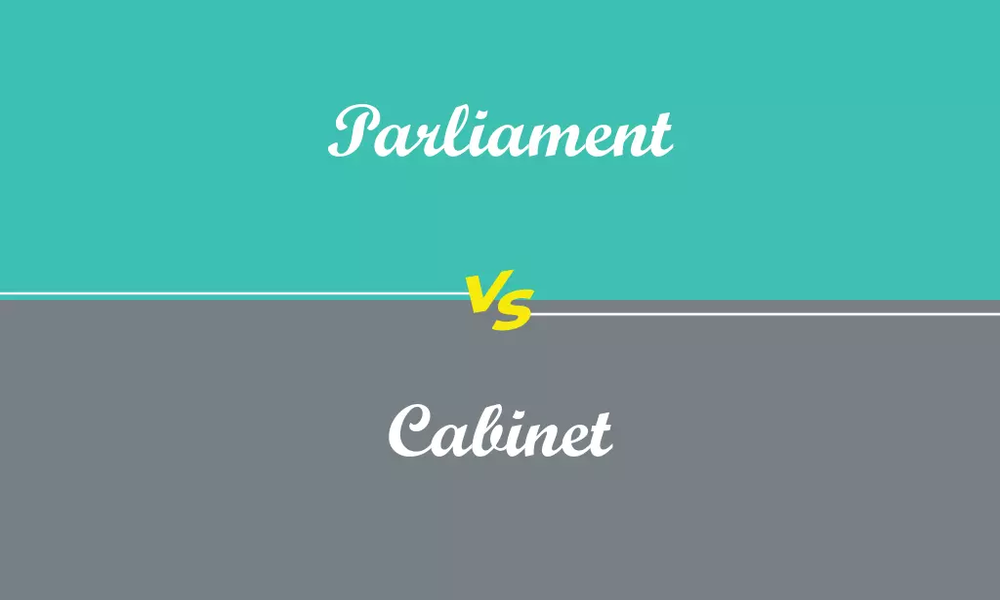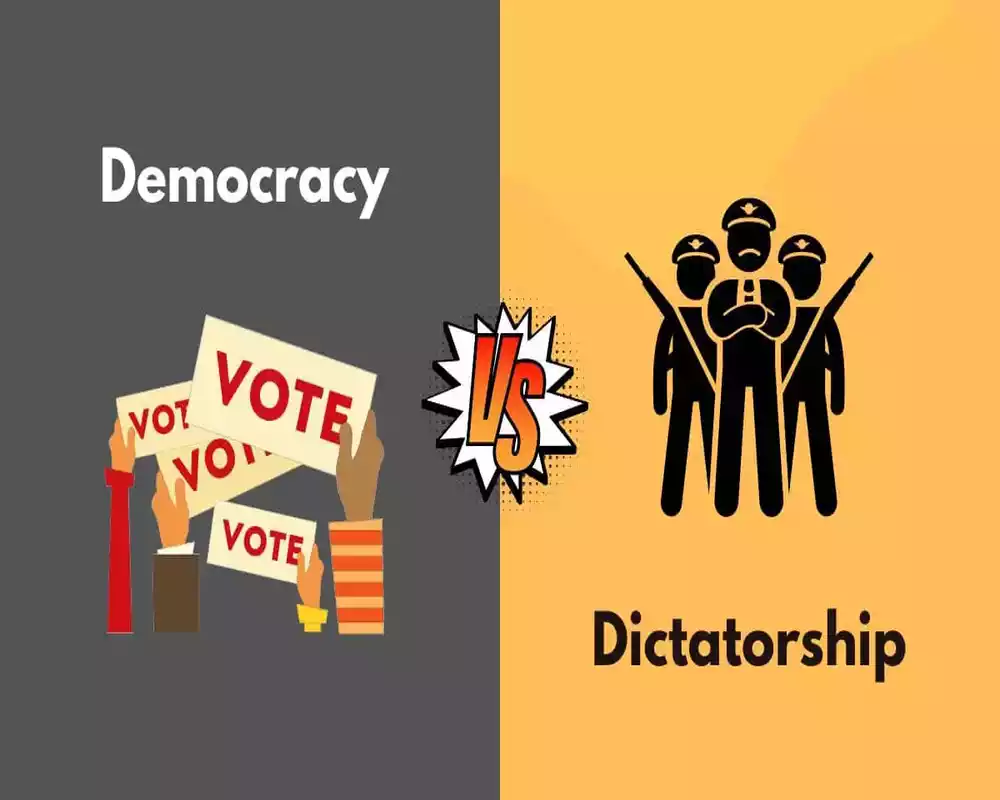The separation of power between the State and Central Government is a crucial aspect of governance in a lot of nations across the globe. Understanding the major differences between these two types of government is essential to understanding the way a nation functions.
We will explore the differences that distinguish central and state governments by examining their origins and functions, their jurisdictions, and the complex relationship they have within a federal structure.
These distinctions define the framework of governance and affect everything from policy-making to accountability and financial autonomy. When you’ve finished this journey, you’ll be able to see the nuances of the roles these entities perform in the operation of the nation.
What is State Government?
State governments are the governing body that is established at the sub-national level within a nation. It functions within clearly defined geographical boundaries and is responsible for overseeing and regulating different aspects of the public’s life in that particular region or state.
State governments are a crucial part of the federal or unitary system of governance. Their authority and duties are generally stipulated in the constitution of the country or the legal framework.

- Figure 01: State Government
They play an important function in regulating, executing, and governing matters including police, education as well as healthcare, transportation as well as local government within their respective jurisdictions.
States provide a level of governance that is closer to the public, allowing local decision-making and representation, and also contribute to the overall administration and security of the country.
What is Central Government?
Central Government, often referred to as the national or federal government, is the highest level of governing authority within a nation-state. It encompasses and oversees the entire country, including all its regions, states, or provinces.
Central governments are established and empowered by the nation’s constitution or legal framework, and they hold responsibility for formulating and implementing laws and policies that apply uniformly across the entire nation.
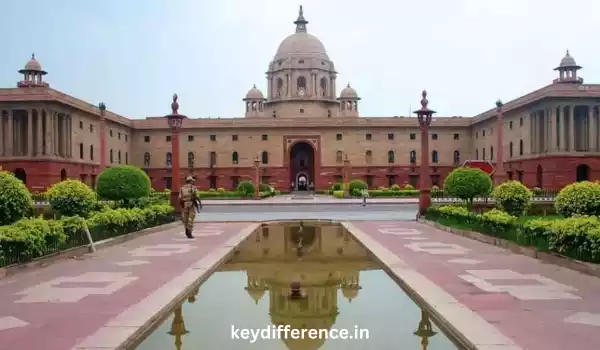
- Figure 02: Central Government
Key functions of the central government include managing the national budget, regulating national defense and security, conducting foreign affairs and diplomacy, and representing the country on the global stage.
Central governments play a crucial role in maintaining national unity, coordinating responses to emergencies or crises, and ensuring the overall governance and stability of the nation.
Importance of understanding the differences
Understanding the distinctions between the central and state governments is vital due to a variety of reasons:
- Good Governance: Understanding the responsibilities and roles of central and state government is crucial to the smooth functioning of the nation. It assists in ensuring that each government level is focused on its specific tasks and minimizes duplication or overlap of effort.
- Resource Allocation: Understanding the differences between central and state government authorities is essential for an equitable allocation of resources. It assists in determining the way funds are allocated to various infrastructure projects, public services as well as social programs.
- Policies Development: The understanding of the division of power between the central and state governments is crucial to formulating efficient policies. This allows policymakers to create policies that meet the state, local, and national needs while tailoring solutions specifically to the regions in which they operate.
- Local Accountability: The citizens must know what level of government is responsible for the different policies and services within their local area. Knowing this will help citizens make their elected officials accountable for their actions and results that impact their lives.
- National Unity: National Unity in the federal system Recognizing the role of central and state governments is crucial to ensuring national unity. A well-balanced distribution of powers can prevent conflict between different regions and create a sense of unity and cooperation.
- Legal and Judicial Clarity: Lawful and Judicial Clearness Legal disputes usually focus on the definition of the powers division between central and state government. Understanding these distinctions is vital to an unbiased and stable legal system.
- Election and Voting: Voters must understand the roles and responsibilities of the various levels of government when they make decisions in elections. This information informs their decisions for state, local, and national officials.
- International Relations: Within the international environment, central governments represent the nation on an international scene. Recognizing these roles is essential for diplomacy, trade deals, as well as international collaboration.
- Emergency Response: When faced with crises, like natural disasters or pandemics an understanding of the role of central and state governments is vital to coordinate the effective response and distribution of resources.
- Civic Engagement: The process of educating citizens regarding the distinctions between central and state governments is a great way to encourage active civic involvement. Well-informed people are more likely in both national and local elections, thereby contributing to a functioning democracy.
Understanding the differences between central and state government is crucial for a well-informed citizenry and efficient governance, as well as equitable distribution of resources, as well as the general well-being of the nation. It allows people and societies to effectively participate in the political process, and hold their governments accountable for their decisions and actions.
Comparison Table of State and Central Government
Here’s a comparison table of State and Central Governments:
| Aspect | State Government | Central Government |
|---|---|---|
| Jurisdiction | Limited to a specific state or region | Nationwide coverage |
| Legislative Authority | Enacts laws for the state | Enacts national laws |
| Executive Authority | Manages state-level administration | Manages the entire country |
| Financial Control | Manages state budget and taxation | Manages the national budget |
| Law Enforcement | State police and law enforcement | National police and armed forces |
| Education | Control over the state education system | Oversight of national education |
| Healthcare | Management of state healthcare | Oversight of national healthcare |
| Transportation | State-specific transportation | National transportation systems |
| Local Governance | May delegate power to local bodies | Primarily operates at the national level |
| Defense and Security | Limited regional defense | National defense and security |
| Foreign Affairs | Typically not involved | Handles international diplomacy |
| Monetary Policy | No control over currency | May control the national currency |
| Emergency Response | State-specific disaster response | Coordination of national emergencies |
| Accountability | To state residents | To the entire nation |
Please note that the specific roles and responsibilities of state and central governments can vary from one country to another, depending on the nation’s constitution and governing structure.
Similarities Between State and Central Government
While state and central governments in a federal system have distinct roles and responsibilities, they also share some similarities, including:
- Constitutional Framework: Both state and central governments derive their powers and authority from the same national constitution or legal framework. The constitution sets out the fundamental principles of governance and the division of powers between the two levels of government.
- Elections and Representation: Both state and central governments are typically elected bodies. Citizens within the state or region elect representatives to the state government, and citizens across the nation elect representatives to the central government. In democratic systems, these elections aim to provide representation at both levels.
- Legal System: Both levels of government operate within the same legal system, which includes the same courts and legal procedures. Disputes and legal matters can be resolved through the national legal system, ensuring consistency and fairness in the application of laws.
- Interdependence: State and central governments often need to collaborate and cooperate on various matters, such as infrastructure projects, disaster response, and public health crises. They may work together to achieve common goals that benefit the entire nation.
- Protection of Rights: Both state and central governments have a responsibility to protect the rights and liberties of citizens, as outlined in the national constitution. Citizens’ fundamental rights are protected and upheld by both levels of government.
- Resource Sharing: There may be mechanisms for revenue sharing between state and central governments. This ensures that resources are distributed equitably and that states have the means to carry out their responsibilities effectively.
- Cooperative Federalism: State and central governments engage in cooperative federalism, where they jointly fund and manage programs that have both state and national significance. This approach fosters collaboration for the benefit of citizens.
- National Interest: Both state and central governments are committed to serving the best interests of the nation as a whole. While state governments focus on local and regional matters, they do so within the context of the broader national interest.
It’s important to note that the extent of these similarities can vary depending on the specific constitutional and governance arrangements of a country. In unitary systems, where power is highly centralized, some of these similarities may be less pronounced.
Powers and jurisdiction limited to the state boundaries
The expression “powers and jurisdiction limited to the state boundaries” signifies that the power and legal oversight of a government institution such as the state government, are limited or limited to the geographical boundaries or the territory of a specific state.
That is the influence of the government, decisions, and the enforcement of laws are valid only within the boundaries of the state and do not extend beyond the boundaries.
This restriction guarantees that the state’s powers are specific to the geographical region it is located in and is not a hindrance to the administration of states that border it and the central authority of the whole nation.
Jurisdiction and Authority
Here’s a list of the terms:
- Jurisdiction: Jurisdiction is a term used to describe the subject matter or territorial limits of a country’s law enforcement agency or government that can create law, enforce it resolve disputes, and manage it. It defines the boundaries of a government’s power and influence.
It can refer to:- Jurisdiction: Geographical Jurisdiction refers to the particular geographic space or territory within which a particular government exercises legal power. For instance, the authority of a state’s government is restricted to the borders of the state.
- Subject Jurisdiction on Matters: This pertains to the kinds of cases or issues that a court or government could decide to tackle. For instance, the family court could be able to handle family-related matters, however, not criminal cases.
- Authority: The term “authority” refers to the authority and legitimacy to make decisions, give orders, or enforce laws within a specific region. It is the foundation for exercising control and management.The definition of authority can include:
- Legal Authority: It is the authority given by law, constitution, or a legal framework. For instance, a nation’s constitution empowers an executive branch of government to handle the national defense.
- Delegated authority: Sometimes the higher levels of government could delegate authorities or powers to a lower level, for example, a state-level government for particular purposes. This delegated authority is usually specified by legal papers.
“jurisdiction and authority” both encompass the extent and scope of the authority and power of a state whether within a certain geographical area or concerning certain subjects that are defined by laws and legal frameworks. This notion is essential to understand how governments operate and conduct their governance.
Responsibilities and Functions
Here’s a list of the terms:
- Responsibility: Responsibilities are the specific obligations and responsibilities the government has to its citizens and the state in general. These obligations are typically defined in constitutions, laws, and other legal documents.The responsibilities can cover a broad variety of subjects, including:
- Laws: The responsibility to create laws that regulate the conduct of organizations and individuals in the area of jurisdiction.
- Administration: It is the responsibility of the administration to control government agencies, departments, and services, assuring that they are functioning effectively and efficiently.
- Resource Management: This is the duty to supervise the budget, financial resources, allocation, and taxation to finance the government’s operations.
- Public Services: It is the responsibility of public services to provide citizens with essential services like healthcare, education, as well as infrastructure development.
- Security: Responsibility to ensure law and order as well as protect national security and ensure the security of the citizens.
- Functions: Functions refer to the specific actions and duties that departments and agencies of the government perform to carry out their responsibilities. The functions they perform can differ based on the government’s level (e.g. central, state or central, etc.)) and the objectives of the administration.The most common government duties comprise:
- policy formulation: The process of formulating and shaping government strategies and policies to address the needs of society and achieve goals.
- Application: Implementing policies, programs, and guidelines usually by way of government departments, to meet particular goals.
- Regulations: Monitoring and enforcing rules and regulations that regulate diverse industries, sectors, and various activities.
- Services Delivery: The provision of essential amenities like education, healthcare transport, and public safety for citizens.
- Finance and Budgeting: Developing, managing, and allocating budgets and financial resources that support the government’s operations and programs.
“Responsibilities and functions” cover the essential tasks and activities that governments are accountable for executing to ensure that it can govern effectively and satisfy the needs of their citizens as well as the wider community.
The responsibilities and duties of a government differ from one level and even from country to country depending on the specific policies and the legal frameworks of each country.

